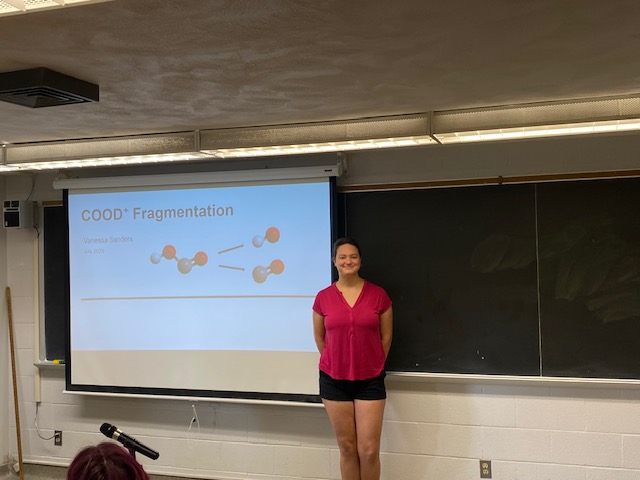
Analyzing the Fragmentation of COOD⁺
Vanessa Sanders, Kansas State University
Physics & Computer Engineering Major
Mentored by Dr. Itzik Ben-Itzhak
My project has involved gathering and analyzing data pertaining to the fragmentation of the molecular ion COOD⁺.

An ion beam of this molecule is produced at a source, then fragmented using a laser, and the fragments are detected using two detectors.
 Fig. 2. Experimental Setup
Fig. 2. Experimental Setup
From this experiment, I determine which fragments are produced, as well as the ratio in which they are produced.

Additionally, I compare these results when certain parameters are changed, namely the intensity and wavelength of the laser.

I find that while changing the intensity does not impact the fragmentation of this ion, changing the wavelength alters fragmentation in several aspects, such as the kinetic energy released by the process.

Alongside Samuel Diener, I also draw a comparison between COOD⁺ and HCO₂⁺, shown here in branching ratios.

This research provides a wealth of information about COOD⁺, including its relative bond strengths and the impact of changing conditions on its fragmentation. Overall, this provides key insight for a theoretical investigation of molecular structure, not only for this molecule, but for countless others that we could analyze moving forward.
Acknowledgments
Naoki Iwamoto, Nirmallya Das, Samuel Diener, Itzik Ben-Itzhak, James R. Macdonald Laboratory. REU funded by the National Science Foundation, Award No. 2244539. Experiment funded by the Department of Education.